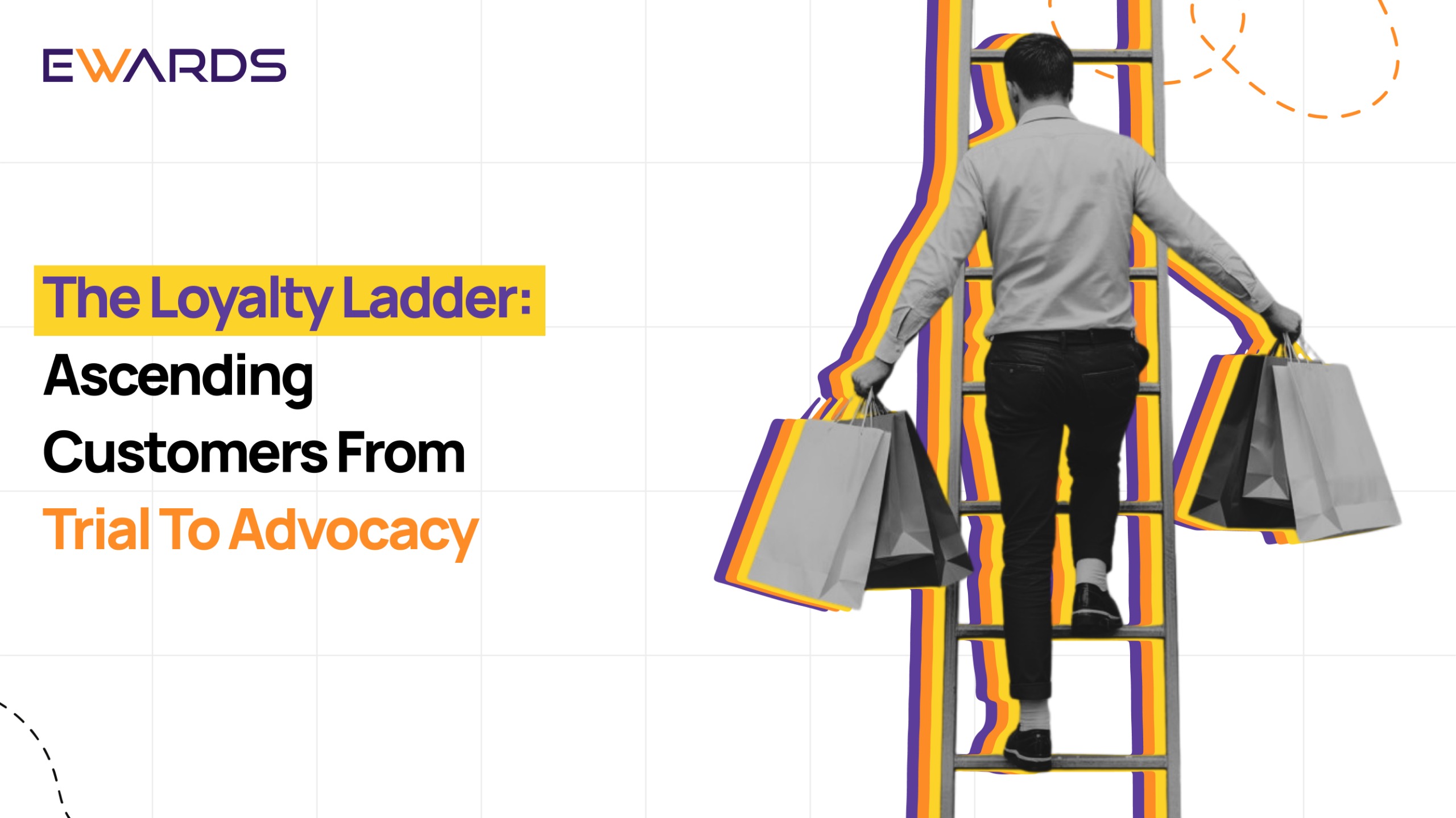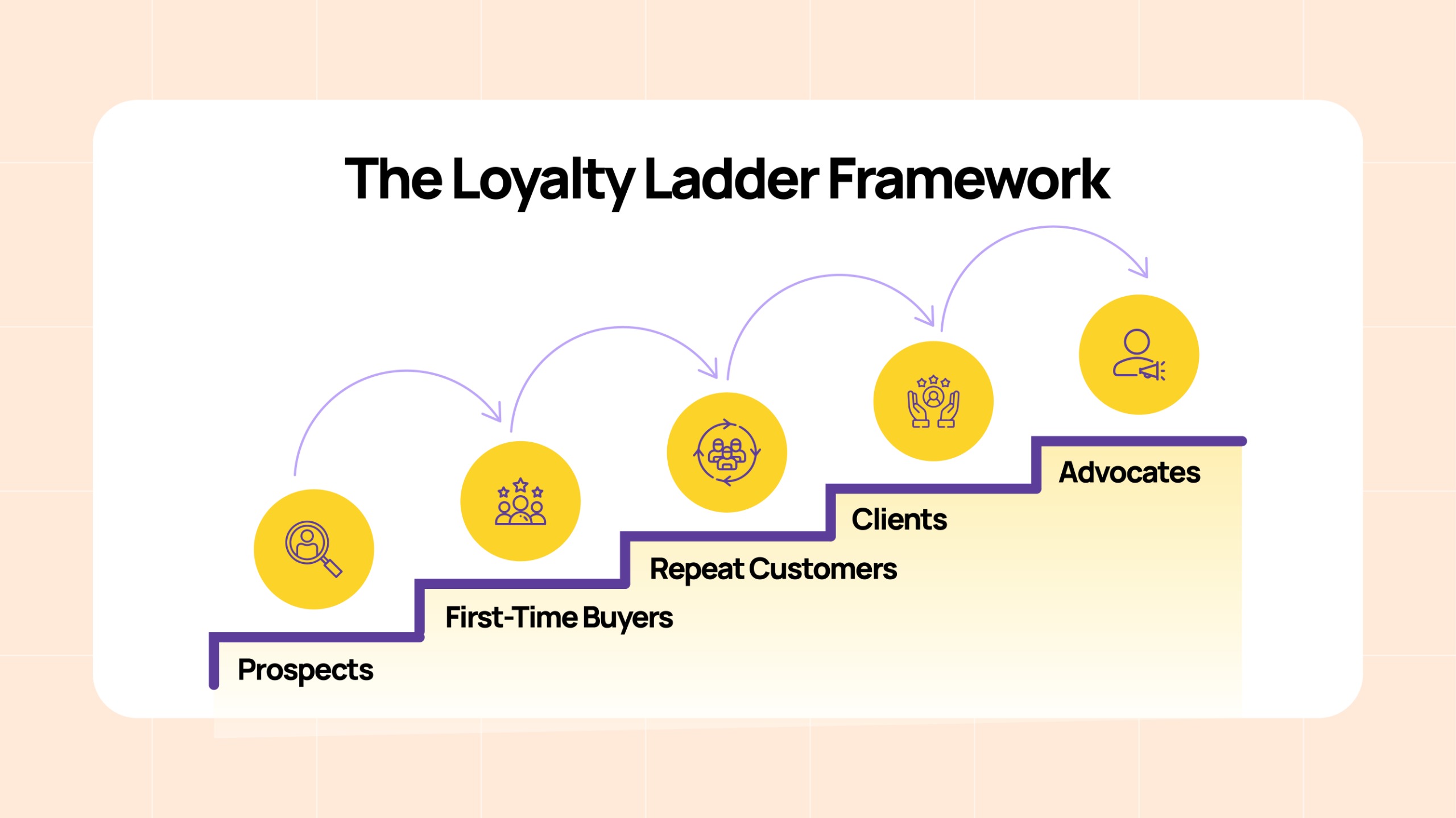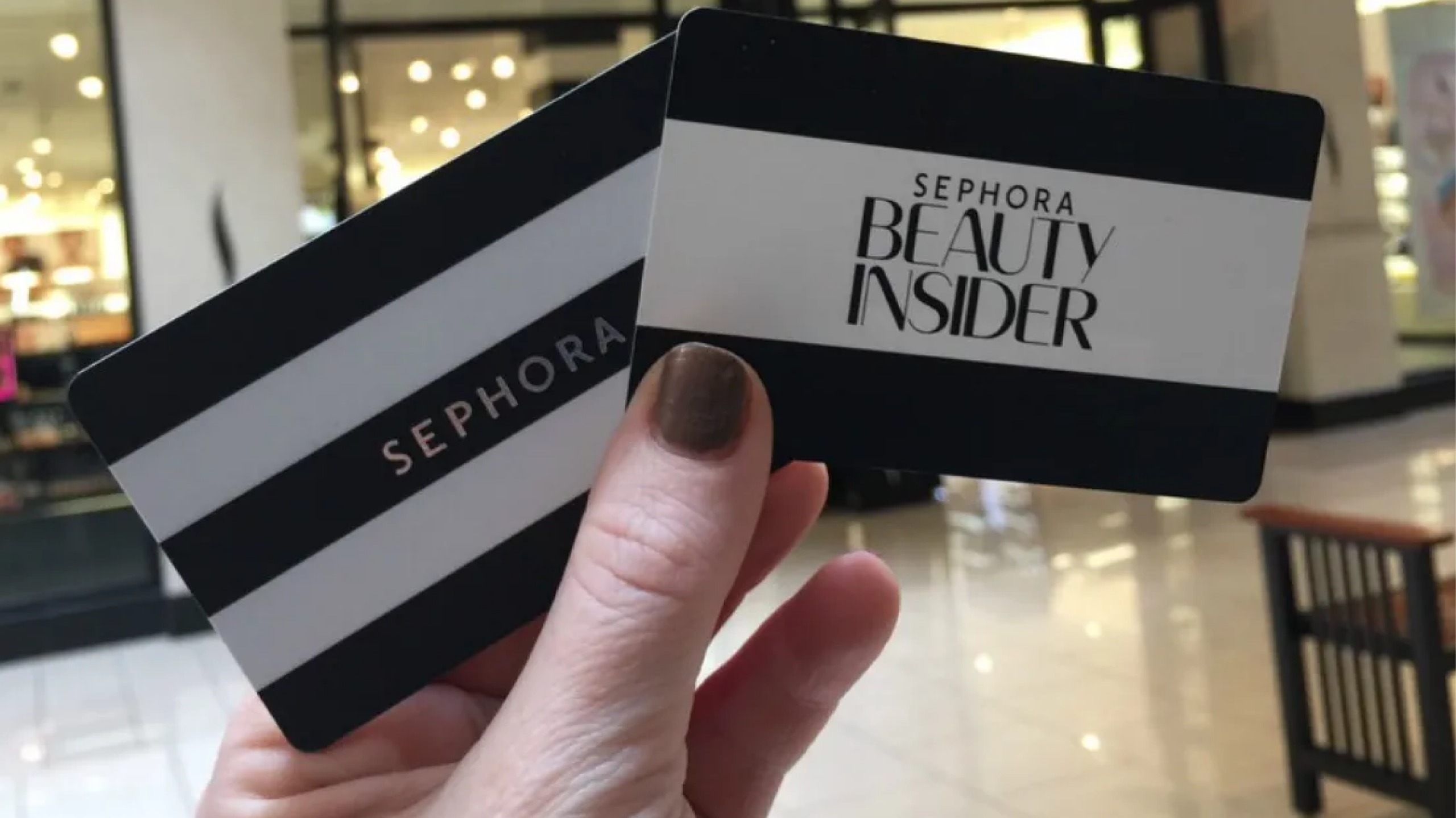
How well do you really know your customers? Are they just one-time buyers, or could they become your biggest advocates?
Customer loyalty remains the bedrock of sustainable business growth. Yet, few organizations systematically nurture customers through a clear progression—from initial trial to repeat purchase, and ultimately, to enthusiastic advocacy. This progression is best understood through the Loyalty Ladder framework, first introduced by Christopher, Payne, and Ballantyne, which outlines distinct stages customers pass through on their loyalty journey.
The Loyalty Ladder framework shows how businesses can guide customers step-by-step, from their first purchase to becoming passionate advocates. Let’s deep dive into the concept of Loyalty Ladder and explore its stages and significance.
Understanding the Loyalty Ladder Framework
The Loyalty Ladder Framework maps out the progressive stages customers move through on their path from awareness to full advocacy. Instead of viewing loyalty as a binary state, this model breaks it down into five key steps:

- Prospects: Potential customers are aware of your brand but have yet to purchase.
- First-Time Buyers: Customers who have made their initial purchase or trial.
- Repeat Customers: Those who return to buy again, showing early loyalty signals.
- Clients: Customers with a consistent buying pattern, often favoring your brand over competitors.
- Advocates: Loyal customers who actively promote your brand through referrals, reviews, or social proof.
Why is this framework so important? Because customer loyalty directly impacts your bottom line. Studies show that increasing customer retention rates by just 5% can lead to profit increases of 25% to 95% (Bain & Company). This is because loyal customers tend to spend more, buy more often, and cost less to serve.
Moving customers up the Loyalty Ladder is not automatic; it requires deliberate strategies tailored to each stage. For example, converting a prospect into a first-time buyer involves reducing friction and building trust, because according to a report, approximately 7 out of 10 people abandon their online shopping carts even before they make a purchase. Similarly, according to Business.com, turning a repeat buyer into a loyal client often involves personalized engagement; repeat customers spend 67% more than new customers.
It is the advocates who provide exponential value. According to an article by Invesp, referred customers have a 37% higher retention rate and are 4 times more likely to refer to your brand than non-referrals. This demonstrates that turning clients into advocates not only drives sales but also reduces acquisition costs.
Thus, the Loyalty Ladder Framework helps businesses understand where customers currently stand and what actions are needed to deepen loyalty, increase lifetime value, and build sustainable growth. Without a clear view of this journey, brands risk missing opportunities to engage customers meaningfully and unlock their full potential.
Navigating Different Stages of Loyalty Ladder with CRM
Successfully guiding customers up the Loyalty Ladder requires understanding the unique needs and behaviors at each stage. Here’s a practical look at how to engage customers effectively, backed by real-world examples and data.
- Prospects → First-Time Buyers
Key challenge: Converting awareness into a first purchase.
Strategy: Use targeted, value-driven offers combined with personalized onboarding to lower barriers and build trust.
Example:
Glossier, a beauty brand, capitalized on social proof and influencer marketing to convert prospects into first-time buyers. They offer personalized product recommendations and trial-size kits, which led to a tremendous increase in first-time conversions in their early years.

Image: Social Proof of Glossier
Source: Glossier Instagram handle
CRM Tip: Employ welcome email sequences and in-app onboarding messages to engage first-time buyers immediately.
- First-Time Buyers → Repeat Customers
Key challenge: Encouraging customers to return after their initial purchase.
Strategy: Deliver exceptional post-purchase experiences, personalized follow-ups, and introduce loyalty rewards.
Example:
Amazon uses its “Subscribe & Save” program to encourage repeat purchases. According to Reason & Automation, Amazon has a 25% higher repeat purchase rate than one-time buyers.

Image: Subscribe & Save Program of Amazon
Source: Amazon
CRM Tip: Automate post-purchase thank you emails with product usage tips and time-based re-engagement offers.
- Repeat Customers → Clients
Key challenge: Turning casual repeat buyers into consistent clients who prefer your brand.
Strategy: Use segmentation and predictive analytics to personalize offers and introduce exclusive memberships or premium services.
Example:
Sephora’s Beauty Insider loyalty program offers tiered benefits, driving clients to spend more annually than non-members.

Image: Beauty Insider Program of Sephora
Source: Sephora
CRM Tip: Segment your repeat customers by purchase frequency and lifetime value; tailor campaigns accordingly.
- Clients → Advocates
Key challenge: Encouraging clients to become vocal promoters and loyal advocates.
Strategy: Foster emotional connections, encourage user-generated content, and implement referral programs with meaningful incentives.
Example:
Tesla relies heavily on its passionate community of advocates, with referral programs contributing to vehicle sales growth.
CRM Tip: Use NPS surveys and social listening tools to identify satisfied customers and invite them into advocacy programs.
Measuring Success: The Impact of Loyalty Progression on Business Growth
Understanding the Loyalty Ladder is one thing, but seeing its real-world impact through data is what drives strategic action. Companies that actively nurture customers through these stages consistently outperform their competition.
For example, research from Bain & Company reveals that increasing customer retention rates by just 5% can boost profits by 25% to 95%. This significant uplift happens because loyal customers not only spend more but also reduce marketing and service costs.
Moreover, according to Zendesk, 76% of customers expect personalization, and the brands that excel at personalization see 71% growth in customer loyalty. This highlights the value of tailored communications and targeted loyalty initiatives at every step of the ladder.
When customers become advocates, the financial benefits multiply. As already mentioned, referred customers demonstrate a 37% higher retention rate, and brands like Tesla leverage this by incentivizing referrals, contributing to around 10% of their sales growth.
These figures confirm that a structured approach to progressing customers up the Loyalty Ladder not only enhances engagement but also directly impacts revenue, retention, and sustainable growth.
How CRM Enables Effective Loyalty Ladder Ascension
Customer Relationship Management (CRM) systems are the backbone of any successful loyalty strategy. They provide the tools and insights necessary to guide customers seamlessly through each stage of the Loyalty Ladder, starting from initial awareness to advocacy.

- Comprehensive Customer View:
CRM systems collect and unify data from multiple channels, giving you a 360-degree view of each customer’s behavior, preferences, and purchase history. This helps in accurately identifying where customers stand on the Loyalty Ladder. - Precise Segmentation:
With detailed customer data, CRMs allow you to segment your audience based on loyalty stages, enabling highly targeted and relevant communication tailored to each customer’s journey. - Personalized and Automated Engagement:
CRM automation lets you deliver timely, personalized messages, whether it’s welcoming first-time buyers, recommending products to repeat customers, or inviting loyal clients to referral programs, ensuring customers receive the right message at the right time. - Predictive Analytics and AI Insights:
Modern CRMs use AI to analyze patterns and predict customer behavior, helping you proactively identify at-risk customers, upsell opportunities, or ideal moments to move customers up the ladder. - Continuous Testing and Optimization:
CRM platforms support A/B testing and campaign analysis, allowing you to experiment with different strategies and refine your approach based on what drives actual loyalty progression. - Scalability and Measurement:
By automating and tracking loyalty initiatives through CRM, businesses can scale their programs efficiently while measuring impact, ensuring investments yield real growth. - Transforming Relationships:
Ultimately, CRM turns one-off transactions into meaningful, ongoing relationships by enabling consistent, relevant engagement, making loyalty a sustainable, profitable outcome.
Conclusion
The Loyalty Ladder framework is a powerful lens to understand and design your customer engagement strategy. By applying stage-appropriate tactics and leveraging CRM insights, brands can transform transactional customers into loyal advocates who fuel sustained growth.
As competitive markets demand deeper customer relationships, investing in loyalty ladder progression isn’t optional; it’s essential.
Are you ready to take your customer engagement to the next level?